Introduction
Welcome to a journey through the world of indoor plants, where our guide of the day is the delightful Ficus Tineke. This easy-to-caretaker yet stunningly beautiful plant has an undeniable allure that captivates not only expert gardeners but also those new to the world of indoor gardening. One look at its lush green leaves with striking cream variegation, and it’s easy to see why it holds a special place in the hearts of plant enthusiasts worldwide.
Ficus Tineke, known for its vibrant variegated foliage, is a top pick among indoor plants. It’s not just because of its visual appeal, which it certainly has in abundance, but also because it brings to your room a slice of the great outdoors, a touch of nature that refreshes and vitalizes any space it inhabits.
Whether you’re an experienced gardener aiming to add a new member to your lush indoor garden or a novice trying your hand at cultivating your first plant, the Ficus Tineke makes for an excellent choice. It inspires both awe and admiration without intimidating those caring for it, embodying the perfect balance of beauty and simplicity.
So, let’s delve deeper into this remarkable plant species, understand its origin, learn about its unique characteristics, and explore how to care for it. We will also look at common issues that might arise while nurturing a Ficus Tineke and equip ourselves with knowledge to tackle them effectively.
Embrace the world of Ficus Tineke, and let’s start this engaging journey into unraveling its mysteries.
The Origin & Type of Ficus Tineke

The Birthplace of Ficus Tineke
To truly appreciate the existence of Ficus Tineke, we need to travel back in time to its roots. This remarkable member of the Ficus genus originates from the tropical regions, boasting a lineage that spans across Asia and Africa. Like an adventurous traveler, it has left its mark worldwide, winning hearts as an ornamental plant in homes, offices, and indoors gardens alike.
Ficus Tineke In-depth
Diving deeper into the classification, Ficus Tineke belongs to the Moraceae family and stands tall among more than 800 species of Ficus. It is a variegated cultivar of the Ficus elastica species, commonly known as rubber trees due to their sap’s rubbery quality.
Unpacking its name, ‘tineke’, it offers a glimpse into its unique characteristic. Tineke refers to the specific variegation on the leaves, an intricate interplay of creamy white and green colors that gives the plant an artistic appeal.
Ficus Tineke’s Natural Habitat
While it confidently adorns our indoor spaces, the natural habitat of the Ficus Tineke is the rainforest. It is here that the plant embraces its true nature, reaching its full potential. Rainforests provide the perfect conditions for it to thrive: consistently warm temperature, high humidity, and filtered light create an environment where Ficus Tineke feels most at home.
Characteristics of Ficus Tineke
Visual Appeal
At first glance, the Ficus Tineke captivates with its unique color palette. The leaves, a vibrant illustrious display of nature’s artistry, bear a stunning variegation of creams and greens. Each leaf pops with a lush emerald green outline, contrasted beautifully with a creamy white, almost silver, interior. Thus creating a striking spectacle that arrests the eye and breathes life into any space it adorns.
Leaf Structure
Beyond its alluring hues, the Ficus Tineke boasts an impressive structure that further highlights its beauty. The leaves, elongated and wide, frequently stretch up to 12 inches long, adding to its substantial presence. They wear a glossy coat, reflecting light and enhancing their visual impact. And while they’re sturdy and tough to touch, they show off a delicate wavy margin, adding to their intriguing appeal.
Growth Habit
The Ficus Tineke shares its growth habit with its Ficus elastica siblings. It grows in an upright direction, reaching toward the light source and adding an element of height to your indoor greenery. Despite its rapid growth in the wild, as an indoor plant, its growth remains moderate – a perfect fit for those wishing to add a touch of nature to their interiors without worrying about the plant overwhelming the space.
Resiliency
Lastly, a look at the hardiness of the Ficus Tineke reveals a plant that doesn’t shy away from a challenge. Though it prefers bright indirect light, it can adapt to lower light conditions, demonstrating its toughness. While it thrives in high-humidity environments reminiscent of its original rainforest habitat, it also adapts to indoor environments effectively, showing off its resilient side.
The characteristics of Ficus Tineke serve as a testament to the plant’s beauty, strength, and adaptability. This overview aims at appreciating its diverse features and understanding the inherent traits that make it such an enchanting addition to an indoor plant collection. With this under our belt, let us move on to the following section where we dig deeper into how we can keep this magnificent specimen in high spirits.
Planting and Care for Ficus Tineke

Planting Requirements
Giving your Ficus Tineke the best start begins with the planting process. It demands well-draining soil that allows excess water to escape, minimising the risk of root rot. A combination of usual potting mix with perlite or coarse sand can be an effective choice. Also, it prefers a pot with drainage holes, further preventing waterlogging.
Light and Temperature Needs
When we talk about Ficus Tineke’s care, light deserves to be in the limelight. It loves residing in bright, indirect sunlight. Too much direct light can lead to leaf scorch, whereas too little light can result in loss of variegation. Therefore, finding the sweet spot is critical. In terms of temperature, it thrives in a range between 60 to 75°F, making most indoor environments ideal for it.
Watering Regimen
Watering is a key aspect of Ficus Tineke’s care regimen. Overwatering can harm the plant. Instead of sticking to a fixed watering schedule, it’s better to monitor the soil’s moisture level. When the top inch of the soil feels dry to the touch, that’s usually a good sign it’s ready for a drink.
Ficus Tineke’s Nutrient Demand
Feeding your Ficus Tineke also factors into its care. During the growing season (spring and summer), a balanced houseplant fertilizer, used as recommended on the packaging, provides the nutrients it requires to flourish. However, during the dormant fall and winter months, you can scale back or stop fertilizing entirely.
The Importance of Humidity and Air Circulation
Being a lover of tropical settings, the Ficus Tineke savors high humidity. Regular misting, placing it on a humidity tray, or using a humidifier helps it thrive in indoor settings. At the same time, it appreciates good air circulation. Strategic positioning to ensure adequate airflow, along with occasional leaf wipes to remove dust, ensures the plant’s overall well-being.
Potential Problems in Growing Ficus Tineke

While the Ficus Tineke is resilient and adaptable, it is not immune to problems. Understanding potential issues and knowing how to manage them undoubtedly strengthens your bond with the plant and helps it thrive.
Leaf Drop
One problem that owners may encounter with a Ficus Tineke is leaf drop. Changes in light, temperature, or position can stress the plant, leading to leaves dropping off. Rectifying this requires identifying and correcting the triggering environmental changes and maintaining consistency to provide the plant stability.
Root Rot
Overwatering or poor drainage can cause root rot. Indicated by yellowing leaves or a wilting plant, this can be a significant problem if not addressed. Proper watering techniques, ensuring a well-draining soil mix, and confirming the presence of drainage holes in your pot are all effective methods of prevention.
Brown Leaf Tips
Should you observe brown leaf tips on your Ficus Tineke, this is usually a sign of low humidity or excessive watering. Confirm your watering schedule, soil drainage, and consider methods to increase humidity, such as misting or utilizing a humidifier.
Pest Infestation
Like any indoor plant, Ficus Tineke is also susceptible to pests such as mealybugs and spider mites. Regular inspection of your plant for signs of these pests and early treatment using suitable insecticides or home remedies can help in managing these problems effectively.
Recognizing and promptly addressing these potential issues is crucial for maintaining a healthy Ficus Tineke. Remember that the key to a happy plant is close observation, consistent care, and a keen understanding of its needs. Mastering this will provide a rewarding and fulfilling plant-growing experience.
Propagation of Ficus Tineke

The propagation of your Ficus Tineke can be a rewarding experience that extends your love for this beautiful plant. Let’s walk through the primary steps of propagating this eye-catching specimen from stem cuttings.
Preparing Ficus Tineke Cuttings
The first step in Ficus Tineke propagation involves taking an appropriate cutting. Look for a healthy stem that holds three to four leaves and cut about 6 inches from the end using a clean, sharp tool. To ensure a clear path for new root growth, we remove the bottom leaf, maintaining the top two for photosynthesis.
Rooting in Water
Next, put the cutting in a transparent container filled with water. Make sure the cut end is submerged but keep the remaining leaves above water level. Place your container in a warm, bright spot, avoiding direct sunlight. In a matter of weeks, you’ll notice root development from the cut end.
Transferring to Soil
Once your roots reach about 2 inches long, your cutting is ready for its new home in the soil. Prepare a pot with well-draining soil, make a hole in the center, and situate your propagated Ficus Tineke. Initially, watering should be frequent, keeping the soil consistently moist to encourage root development.
Aftercare Following Propagation
Following successful propagation, the Ficus Tineke needs time to adjust to its new environment. Keep it away from direct sunlight and maintain high humidity levels by regularly misting the plant or using a humidity tray. Also, keep a lookout for any signs of stress, adjusting care as needed.
Propagation is not only a cost-effective way of expanding your indoor jungle, but it also adds a dimension of satisfaction and accomplishment to your plant parenting journey. Following these steps you can bring more of the beautiful Ficus Tineke into your life and potentially spread the joy to others through gifting these propagated beauties.
Benefits of Ficus Tineke
Ficus Tineke is a stunning plant variety, boasting glossy foliage featuring a striking contrast of various shades of green, cream, and pink. Apart from its aesthetic appeal, the Ficus Tineke offers a multitude of benefits, making it an ideal choice for adding to your indoor green space. Here are some of those benefits:
Air Purification
Similar to other Ficus varieties, the Ficus Tineke carries with it the advantage of air purification. It efficiently filters and absorbs harmful toxins commonly found in indoor environments, such as formaldehyde, benzene, and ammonia. This natural air-purifying ability results in a cleaner and fresher living space, ultimately benefiting your overall well-being.
Stress Reduction
The presence of indoor plants like Ficus Tineke has a positive impact on mental health. They are known to reduce stress, anxiety and enhance focus and concentration. Decorating your home, office, or personal space with Ficus Tineke plants not only adds a lively touch but also assists in creating a serene atmosphere to provide comfort in stressful situations.
Boosted Humidity
Given their tropical roots, Ficus Tineke plants inherently release moisture into the surrounding air. Increased indoor humidity can benefit respiratory health, deter static electricity, and prevent dry skin during colder months. The extra moisture also helps protect wooden furniture from cracking.
Aesthetics and Versatility
The beautiful variegated leaves of Ficus Tineke can elevate any room or space, acting as a focal point or an intriguing accent. This plant is highly adaptable to various interior styles, fitting seamlessly into contemporary, traditional, and eclectic settings. It can be easily grown as a standalone specimen or used to create dramatic displays when paired with other plants.
To summarise, Ficus Tineke is an excellent addition to any indoor space. It not only adds visual appeal with its stunning variegated leaves, but it also provides numerous environmental benefits. This plant undoubtedly contributes to the improvement of well-being and overall ambiance, from air purification to stress reduction, increased humidity, and improved aesthetics. By incorporating, you are not only investing in your living space, but also in the quality of your life, ensuring a greener and healthier future.

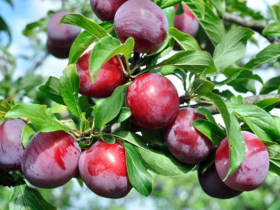
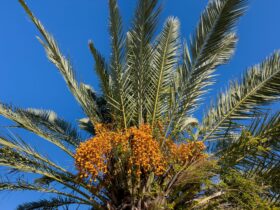

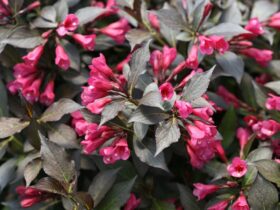
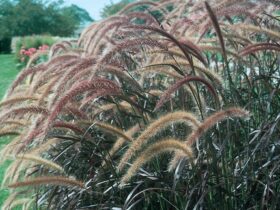
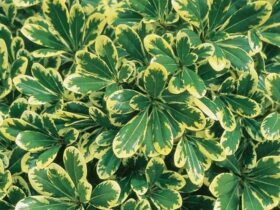


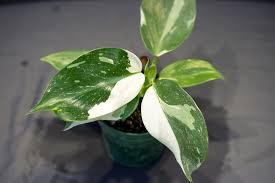



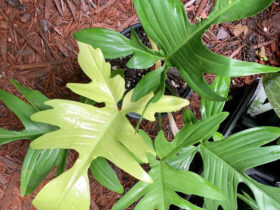
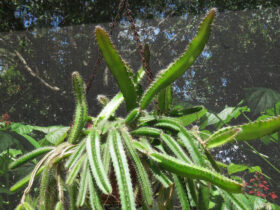
Leave a Reply